Assisi
Back to Italy 2016 Index
Assisi is in the Province of Umbria, on the western flank of Monte Subasio.
It was the birthplace of St. Francis, who founded the Franciscan religious order in the town
in 1208, and St. Clare (Chiara d'Offreducci), the founder of the Poor Sisters, which later
became the Order of Poor Clares after her death.
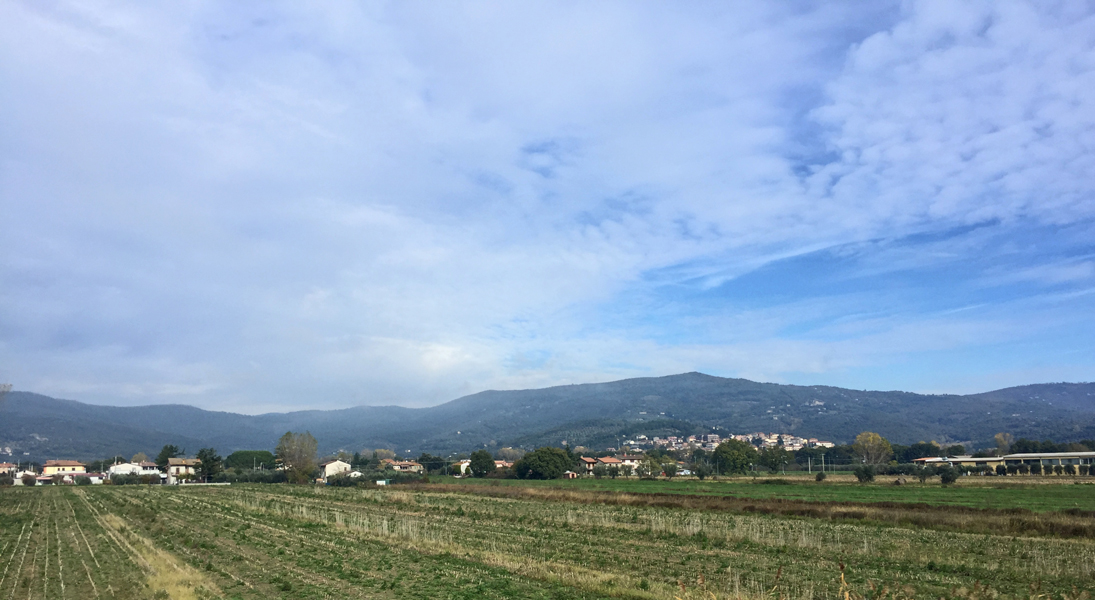 |
| Driving through Umbria. |
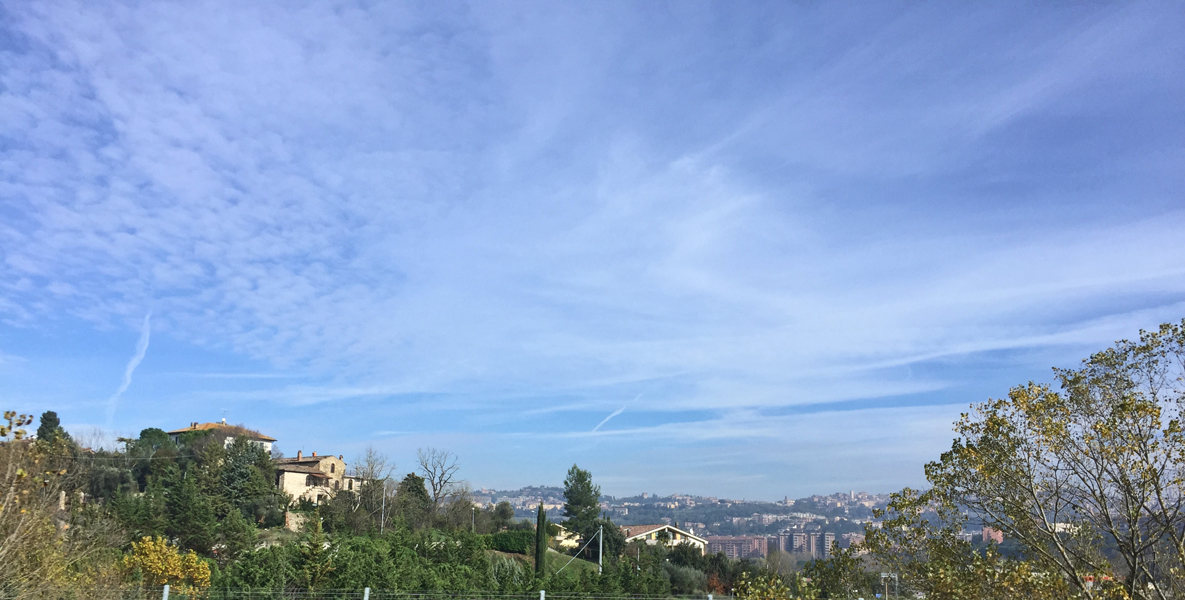 |
| Umbria is a hilly region, with many old small towns like Assisi on the hill tops. |
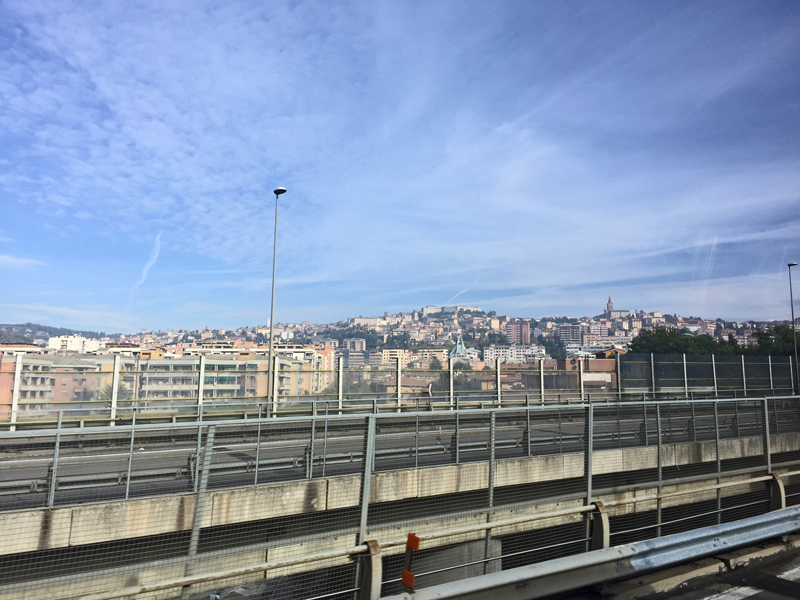 |
| The old town of Assisi is visible on the hilltop as we drive through the new city. |
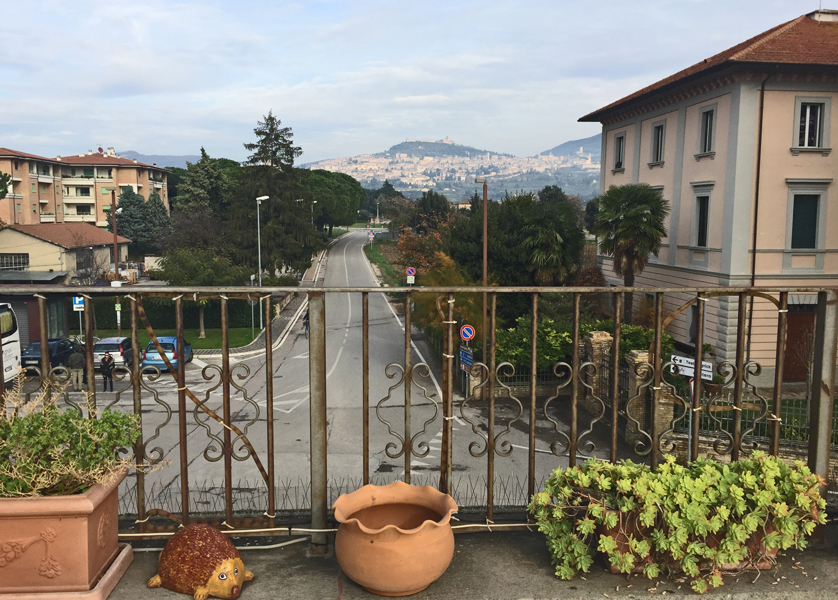 |
| View of historical Assisi from our lunch stop terrace. |
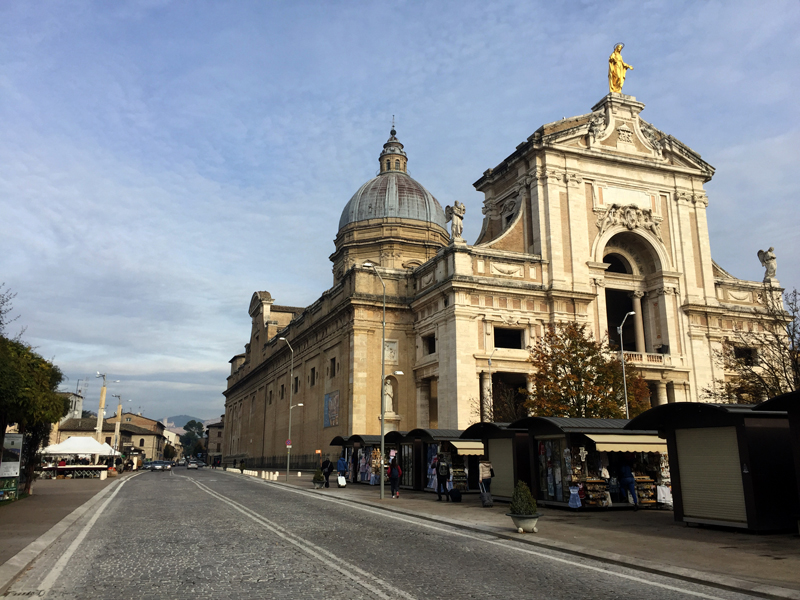 |
| Church of Santa Maria degli Angeli. The large dome (cupola) of this church has a golden statue of Mary above the facade. |
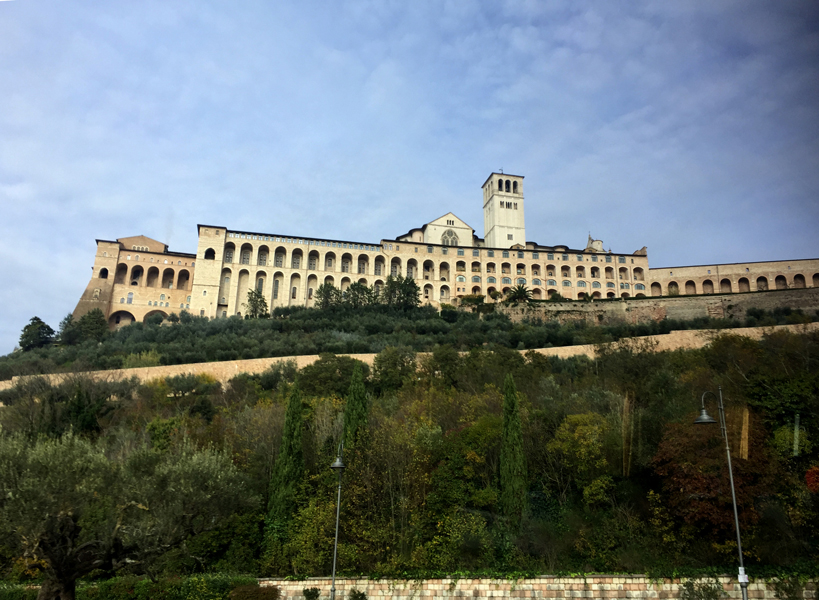 |
| The Basilica of San Francisco. |
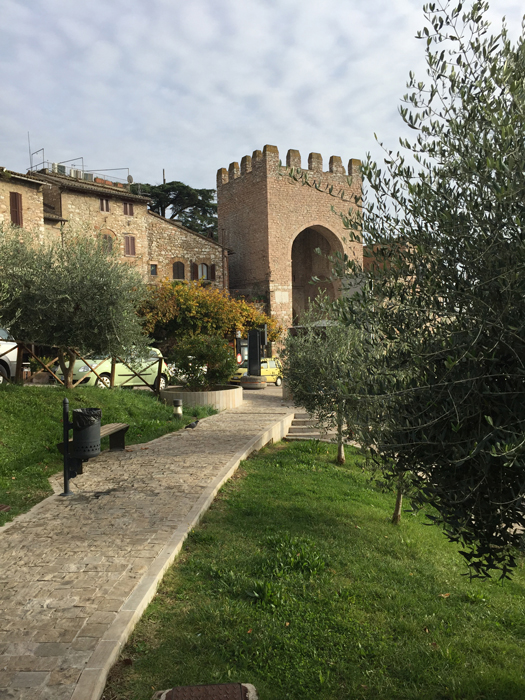 |
| Walking up the hill to the cathedral past a mideval gate. |
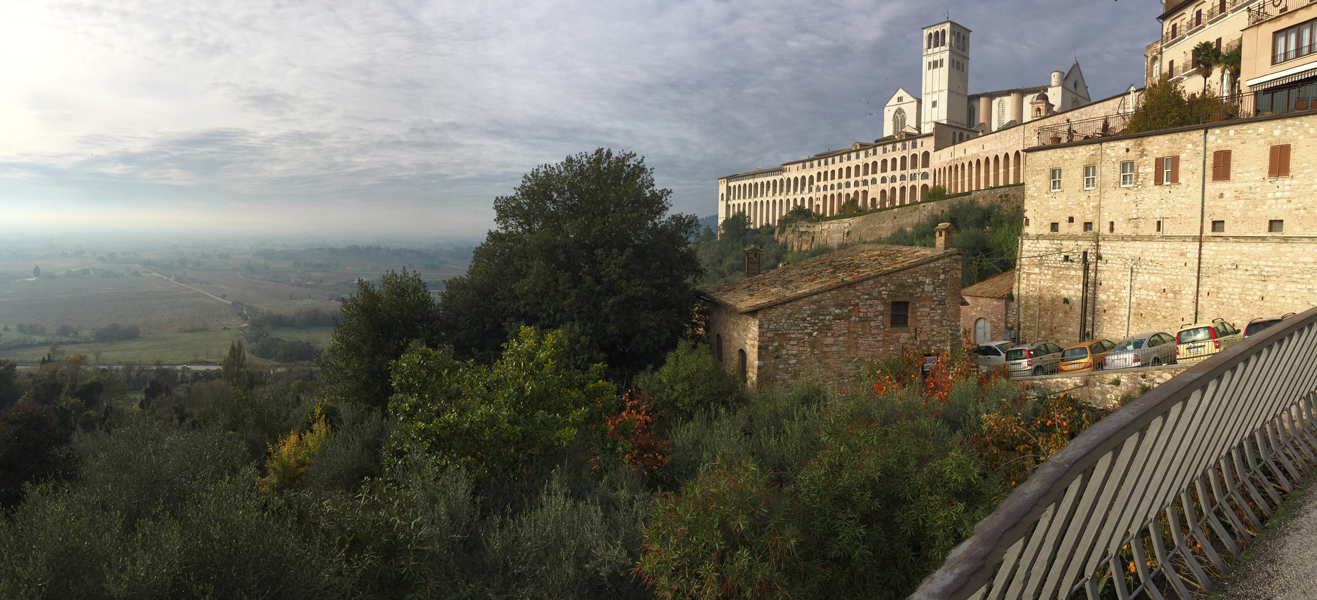 |
| View over the Chiascio valley from the road up to the Basilica de San Francisco. |
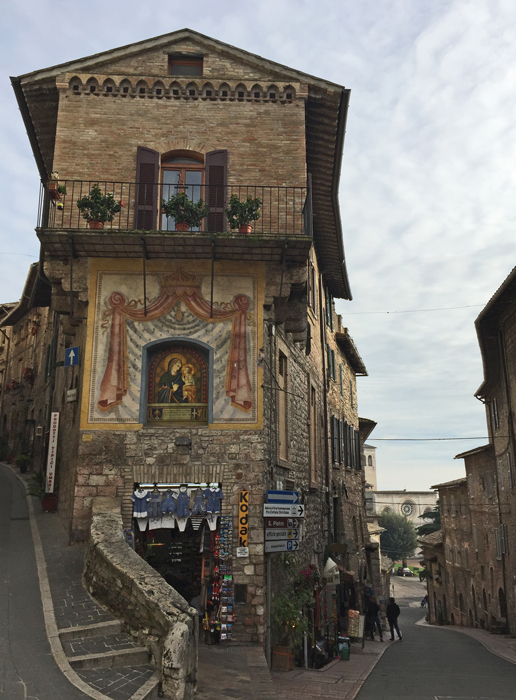 |
| On the way up to the basilica. |
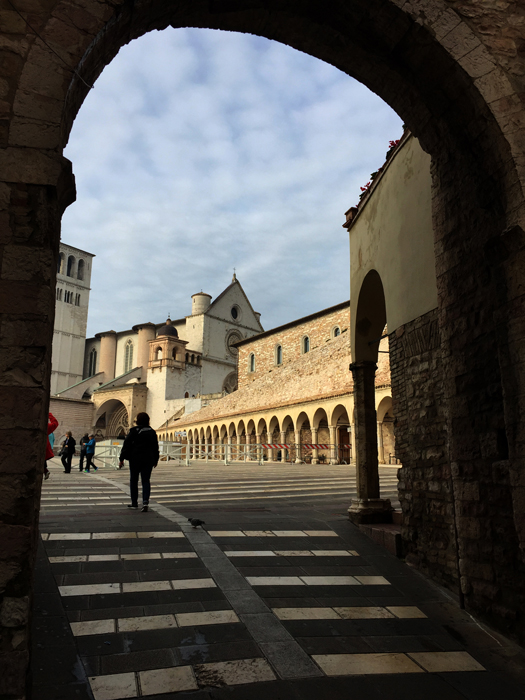 |
| Entering the courtyard. |
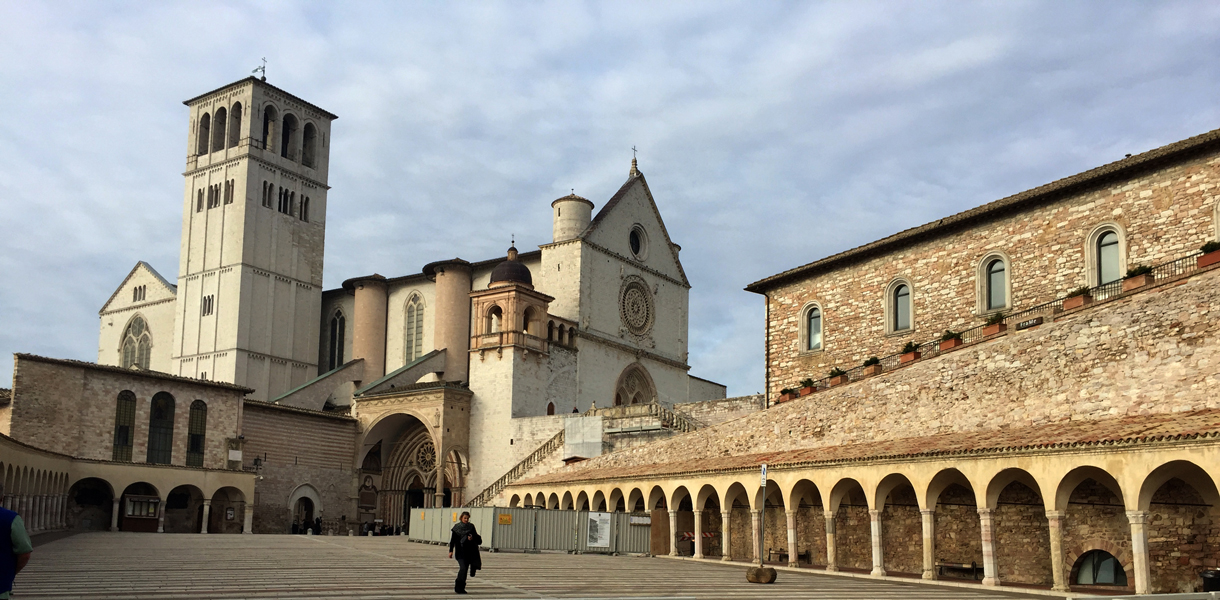 |
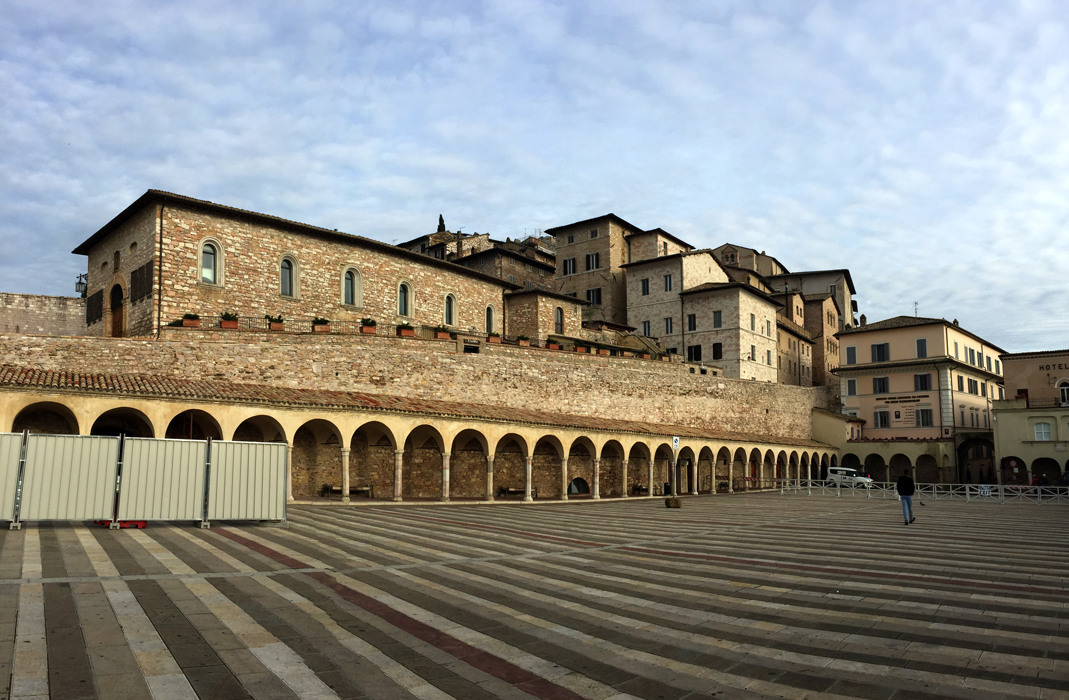 |
| In past centuries, the arcades housed and fed pilgrims visiting the holy site. |
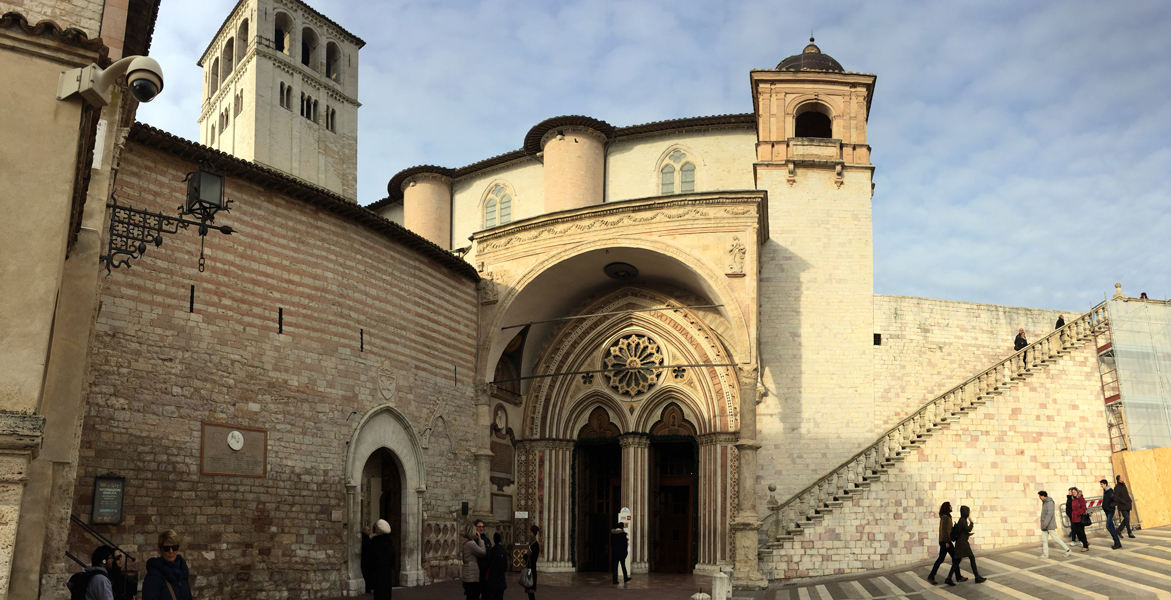 |
| The lower basilica. |
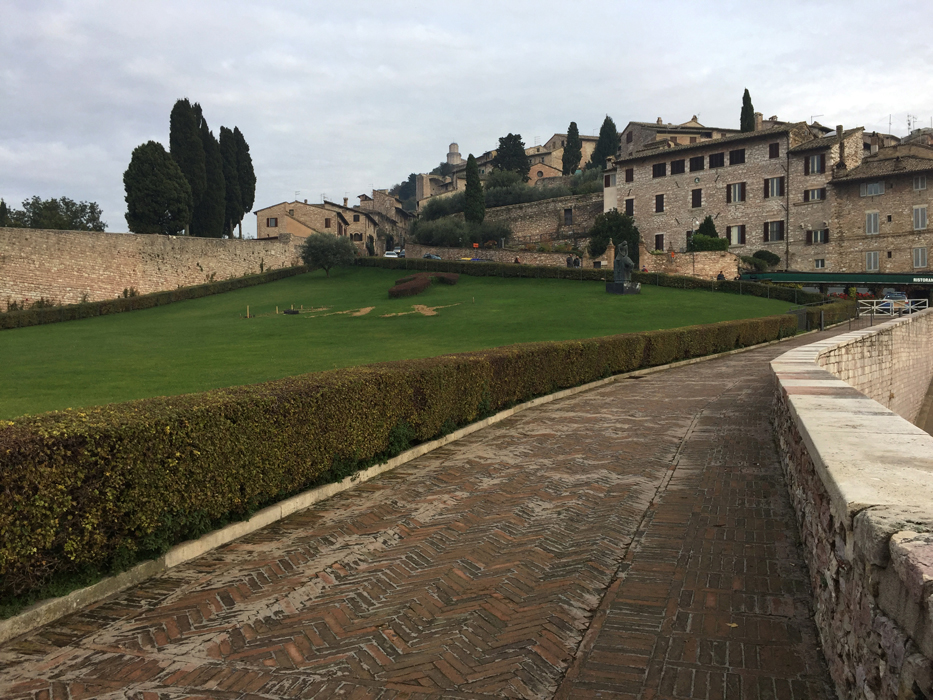 |
| The old medival village lies on the hilltop overlooking the basilica. |
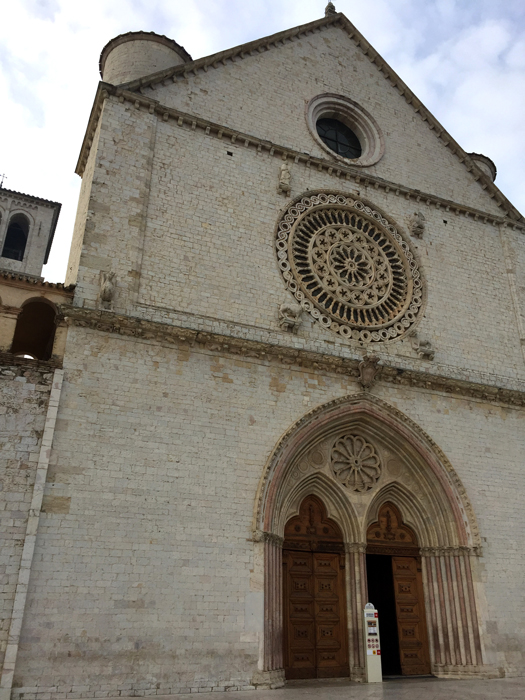 |
| Portal of the upper basilica. |
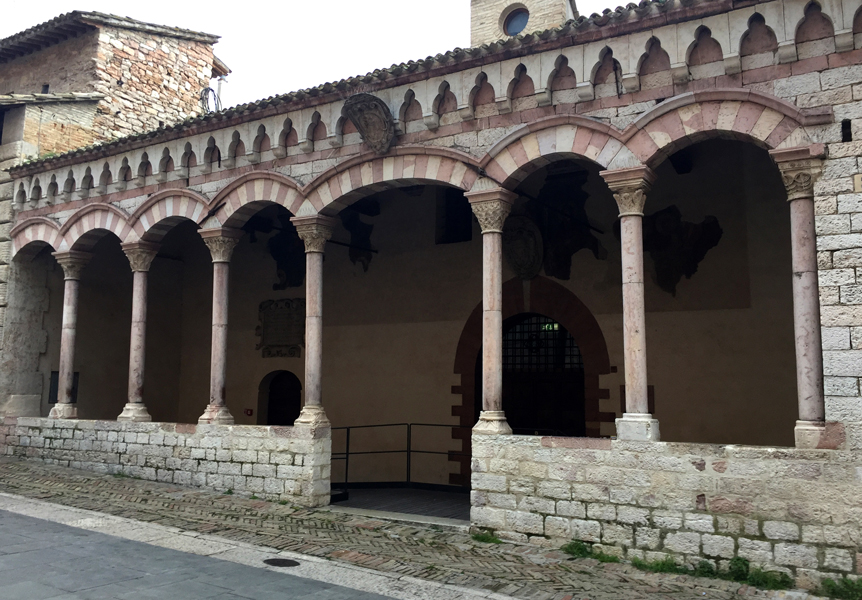 |
After visiting the Basilica of St. Francis, we spent the rest of the day, into the evening, exploring the
town. It is built on a hill, so there are lots of small, steep streets with switchbacks that make for nice
photographs. The town was fairly empty of tourists since we were there in November. Most of the
building facades are from the medival to renaissance eras, while the doors, windows and interiors have been updated
numerous times.
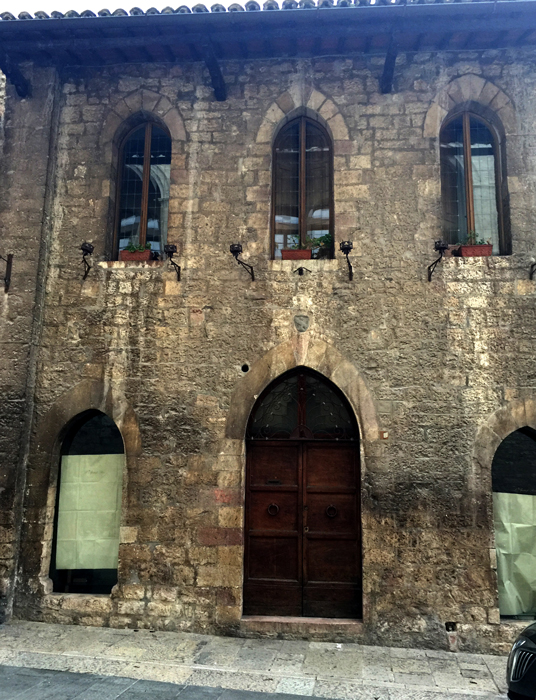 |
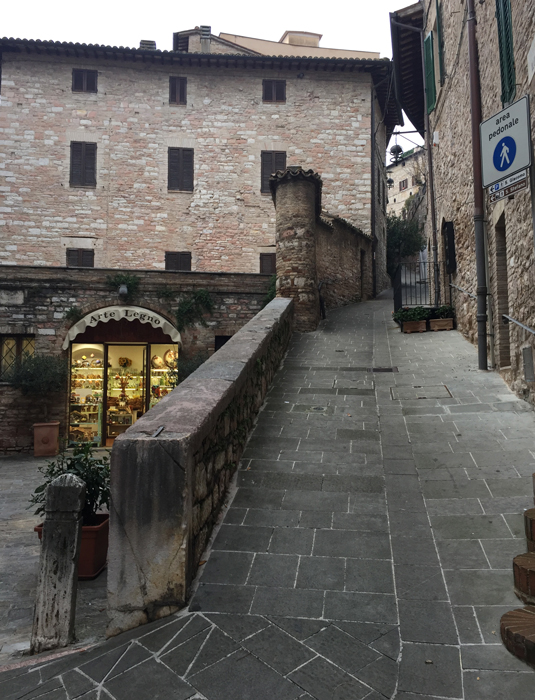 |
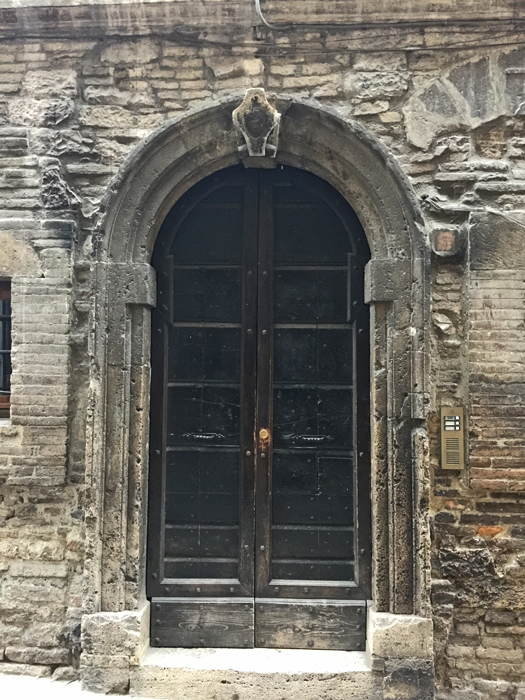 |
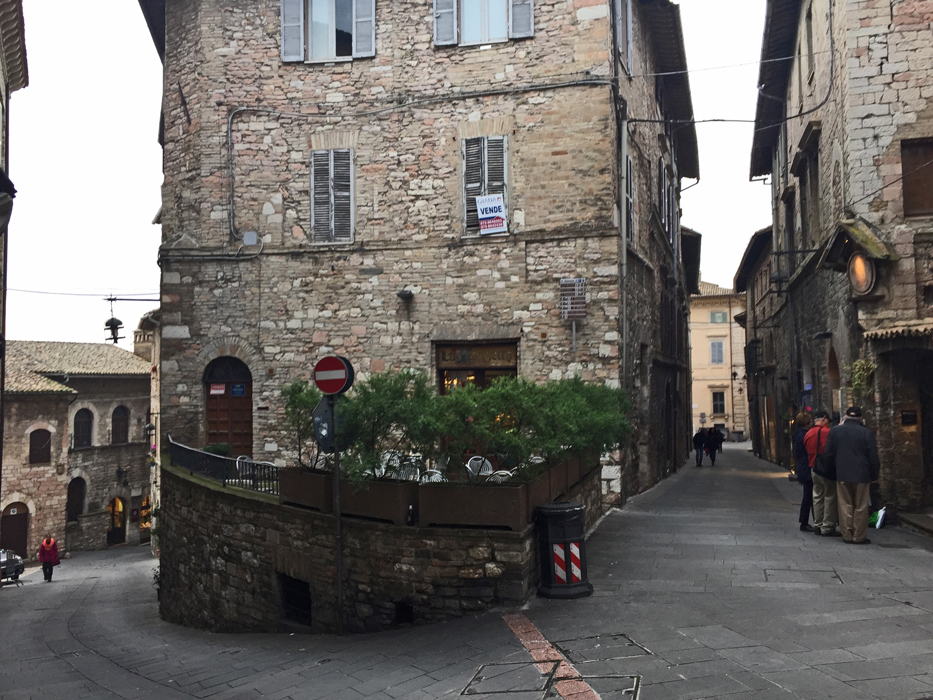 |
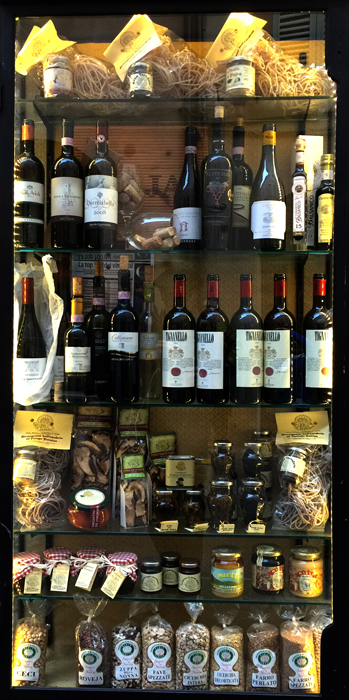 |
| Umbrian wine, pasta, beans and preserves. Yum. |
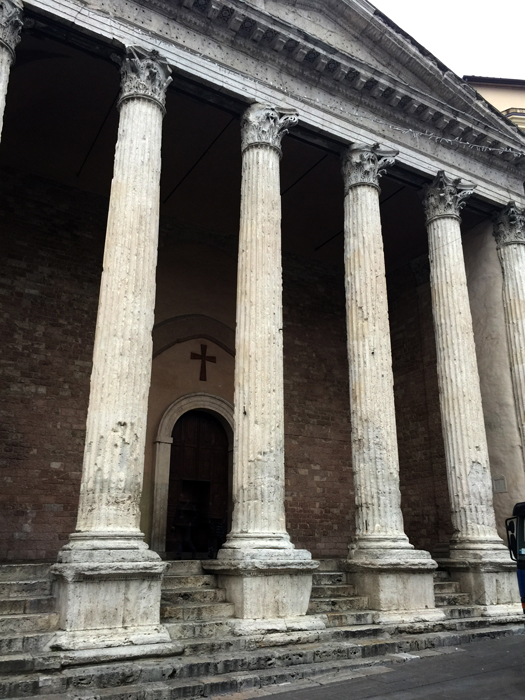 |
| The
Temple of Minerva, an ancient Roman building, currently houses a
church, Santa Maria sopra Minerva, built in 1539 and renovated in
Baroque style in the 17th century. The temple was built in the
1st century BC by Gnaeus Caesius and Titus Caesius Priscus, who were
two of the city's quattuorviri and also financed the construction. The
attribution to the goddess Minerva derives from the finding of a female
statue, although a dedication stone to Hercules has been found, and the
temple was likely dedicated to this male demi-god. |
 |
| Torre de Popolo, and the Piazza del Comune. The fountain dates from the 16th century. |
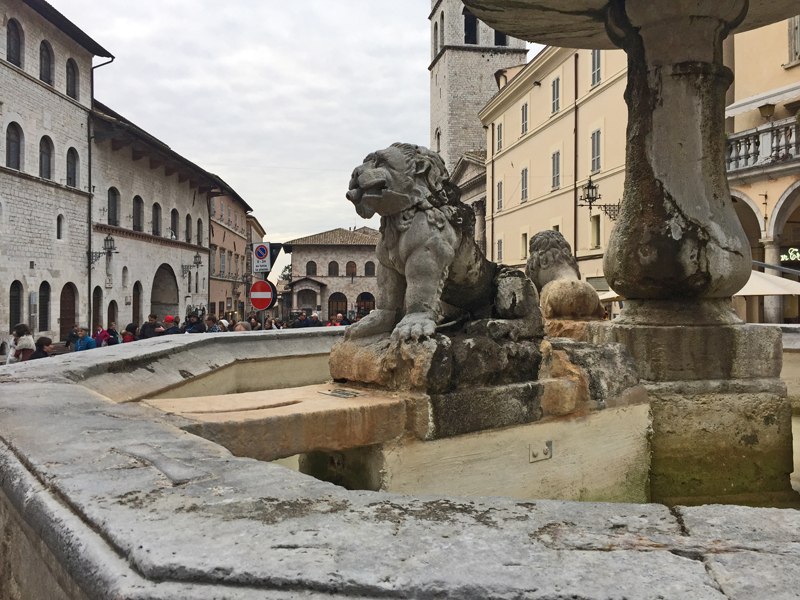 |
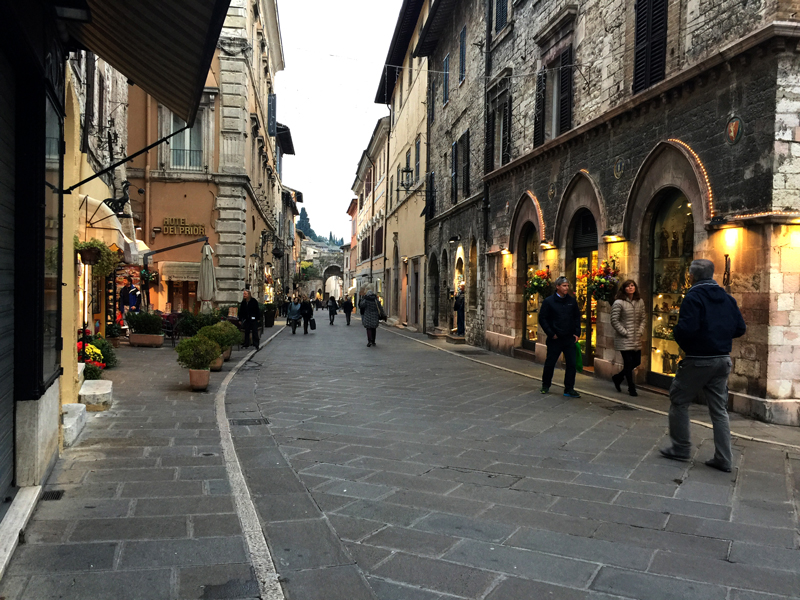 |
| Our hotel at the left. |
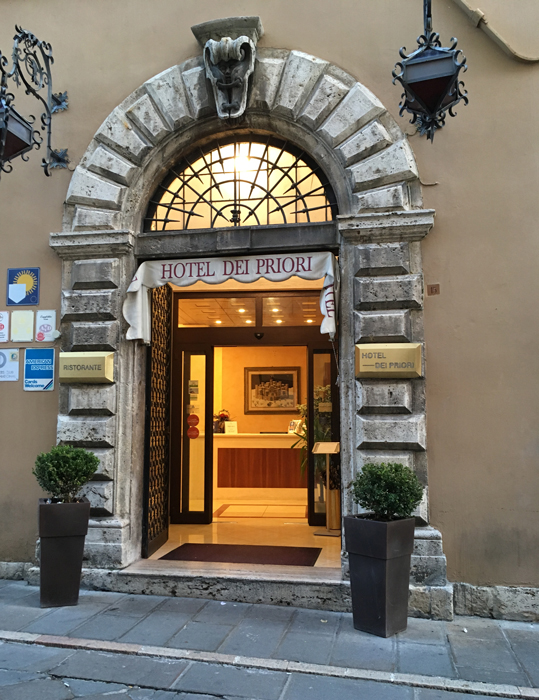 |
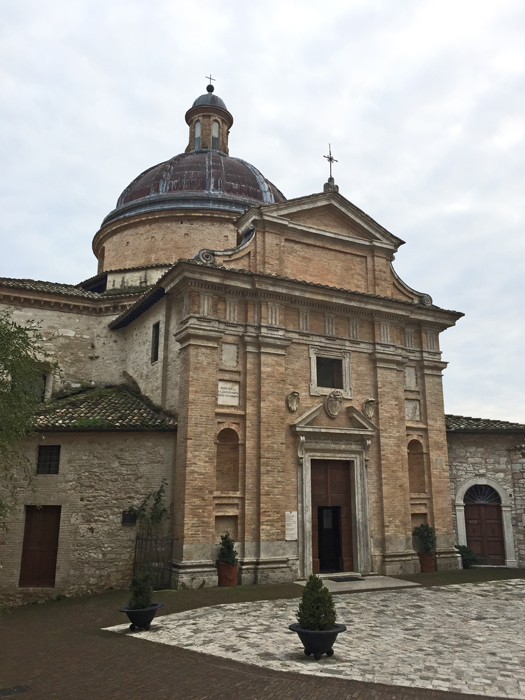 | 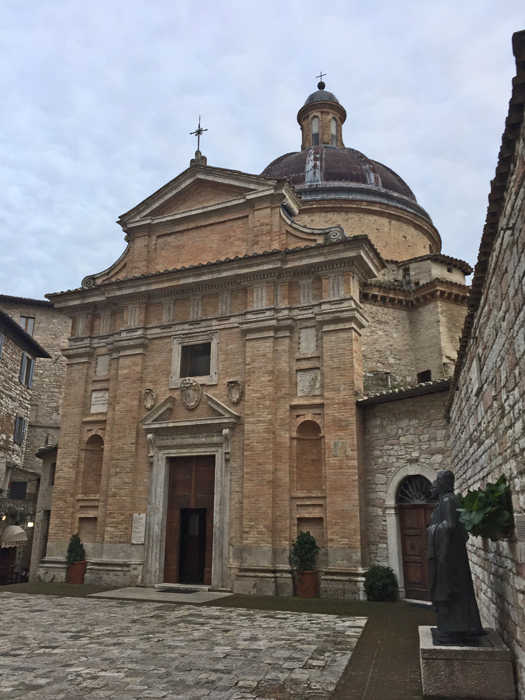 |
| The Chiesa Nuova, built in 1615 on the site of the presumed birthplace of St. Francis, the house of Pietro di Bernardone. | It was then called Chiesa Nuova because it was the last church to be built in Assisi at that time. |
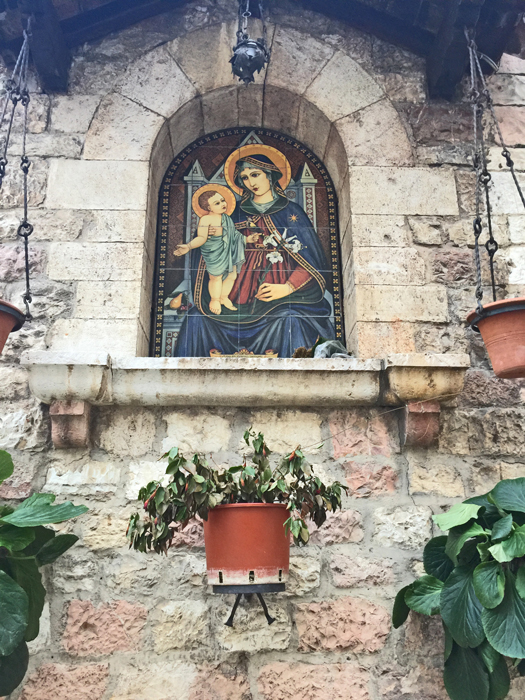 |
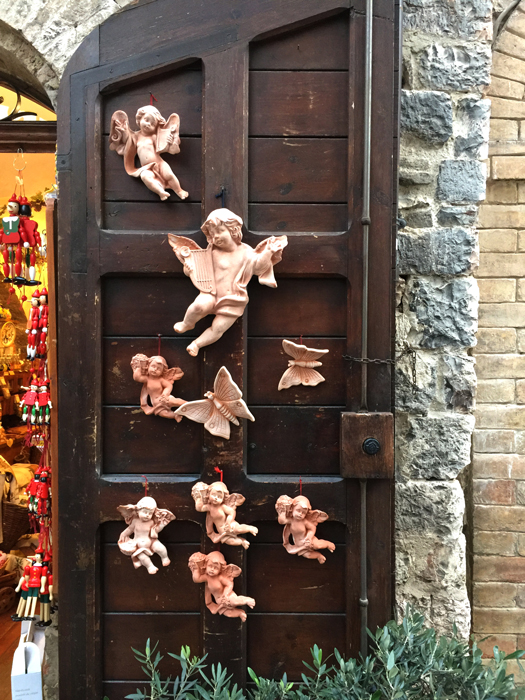 |
| Like any religious site visited by many people, there are lots of souvenier shops. |
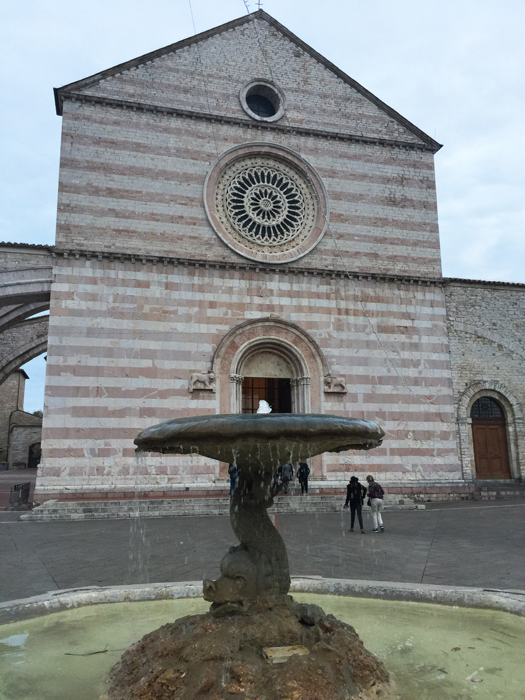 |
| The
Basilica of Saint Clare (Basilica di Santa Chiara) is dedicated to and
contains the remains of Saint Clare of Assisi, a follower of Saint
Francis of Assisi and founder of the Order of Poor Ladies, known today
as the Order of Saint Clare. |
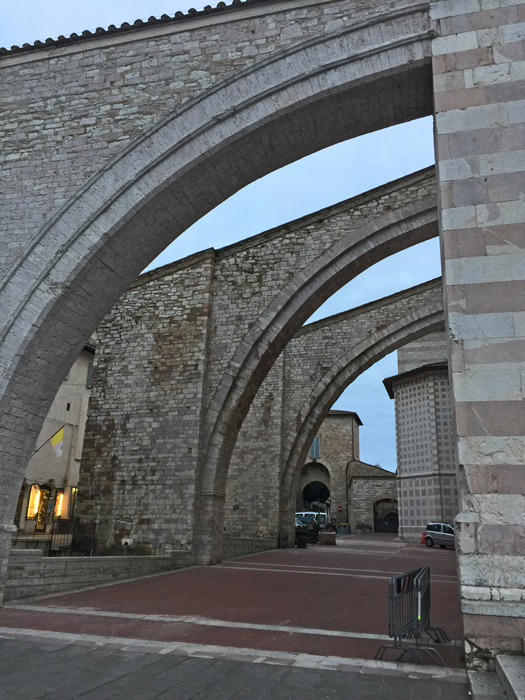 |
| The massive lateral buttresses that support the walls of St. Clare's. |
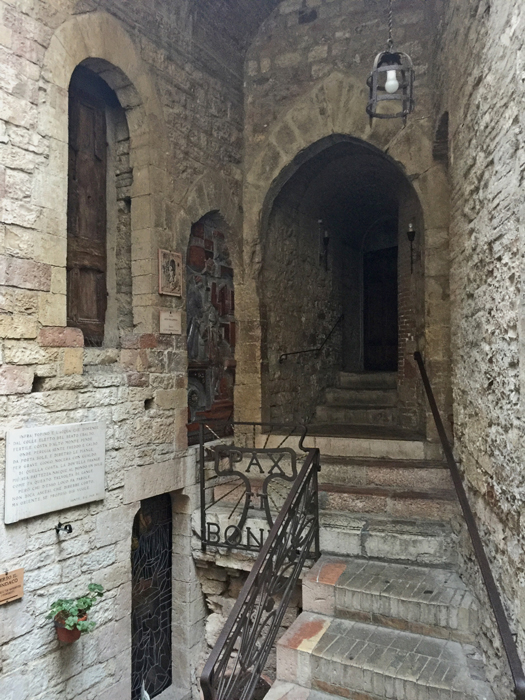 |
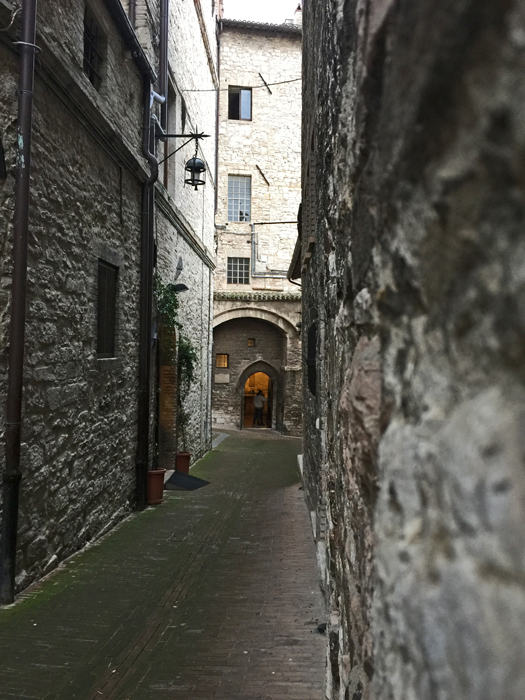 |
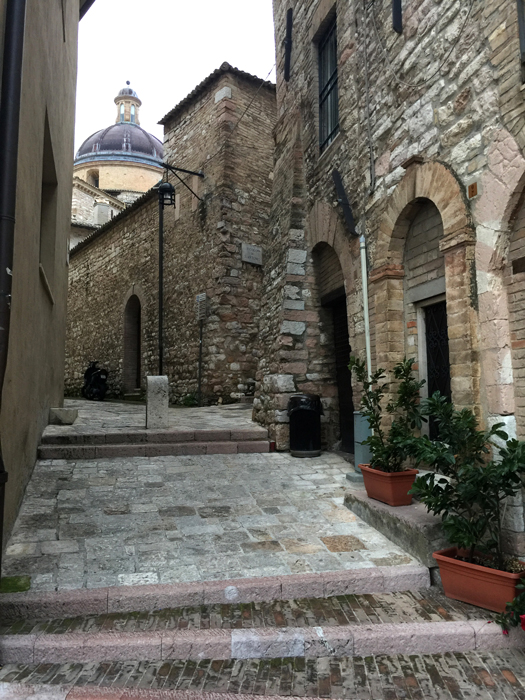 |
| The dome of Chiesa Nuova. |
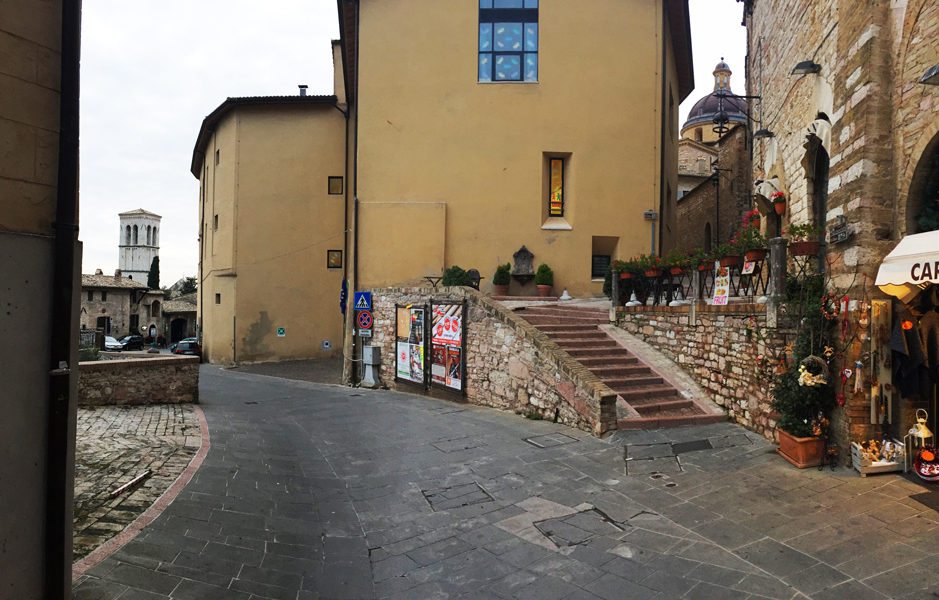 |
| Benecictine Abbey of St. Peter on the left, Chiesa Nuova on the right. |
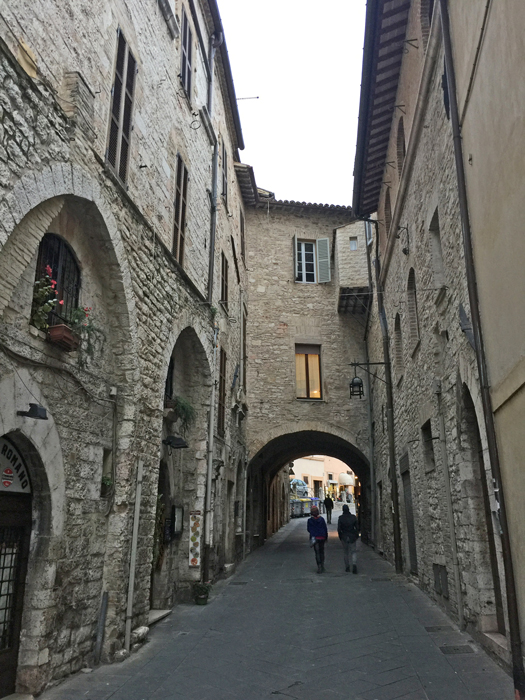 |
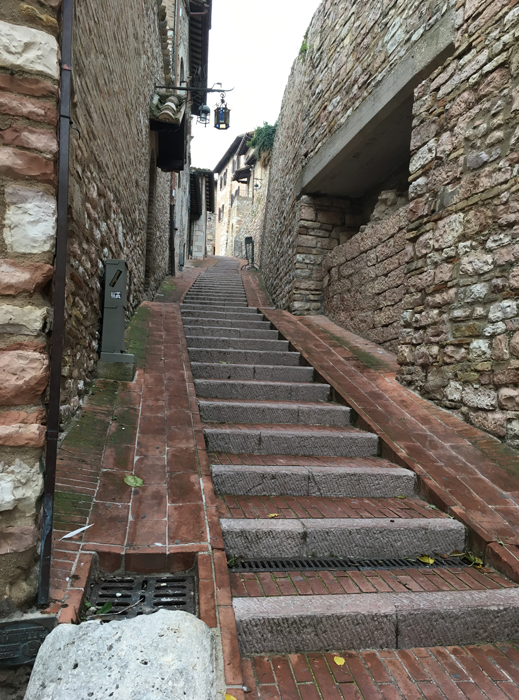 |
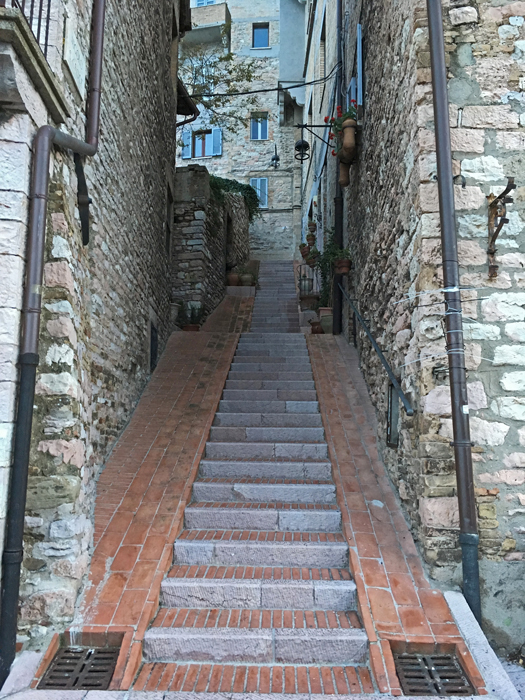 |
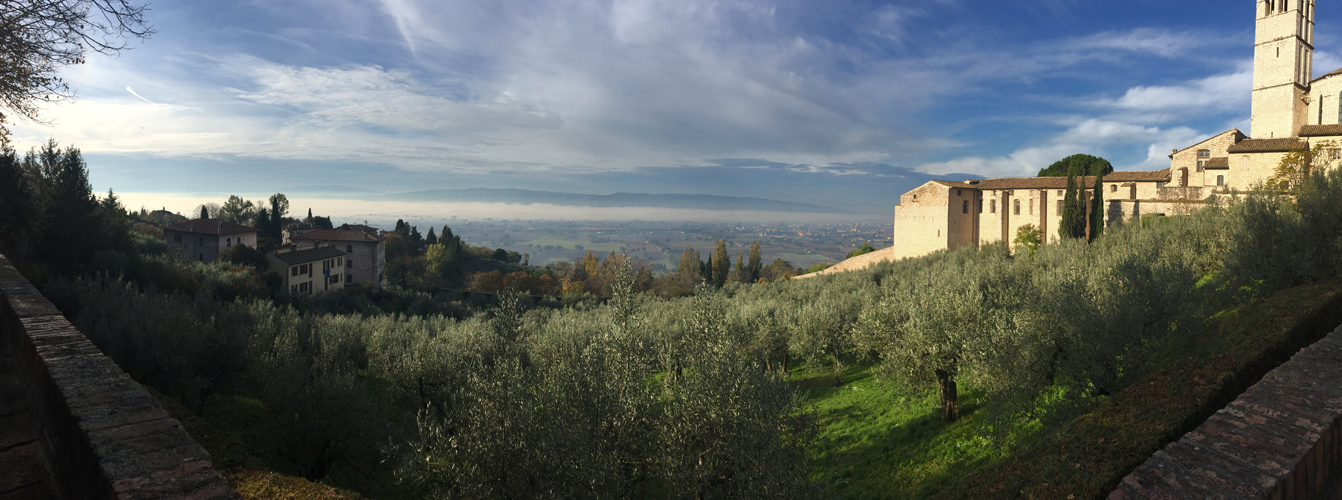 |
| Catching a nice sun break in the late afternoon. |
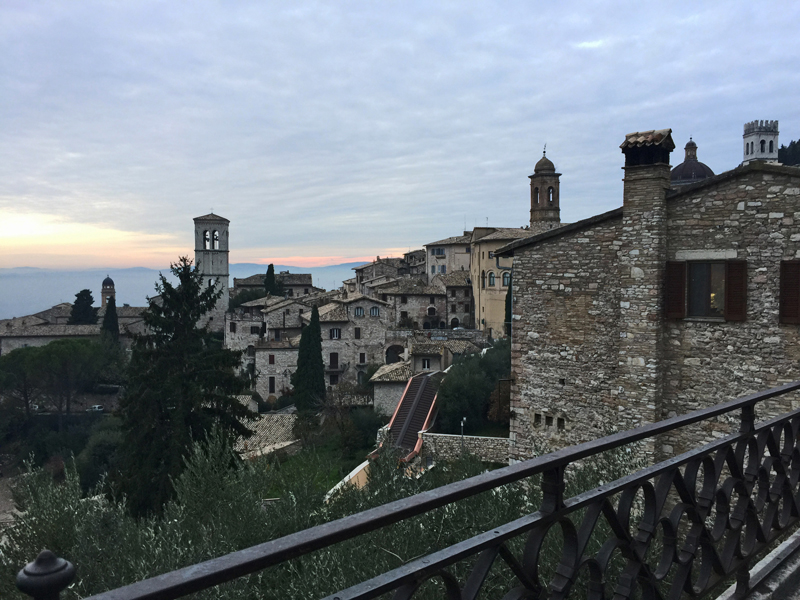 |
| Bell towers dominate the skyline in this view, St. Peter's on the left, Chiesa Nuova and Torre del Popolo at the far right. |
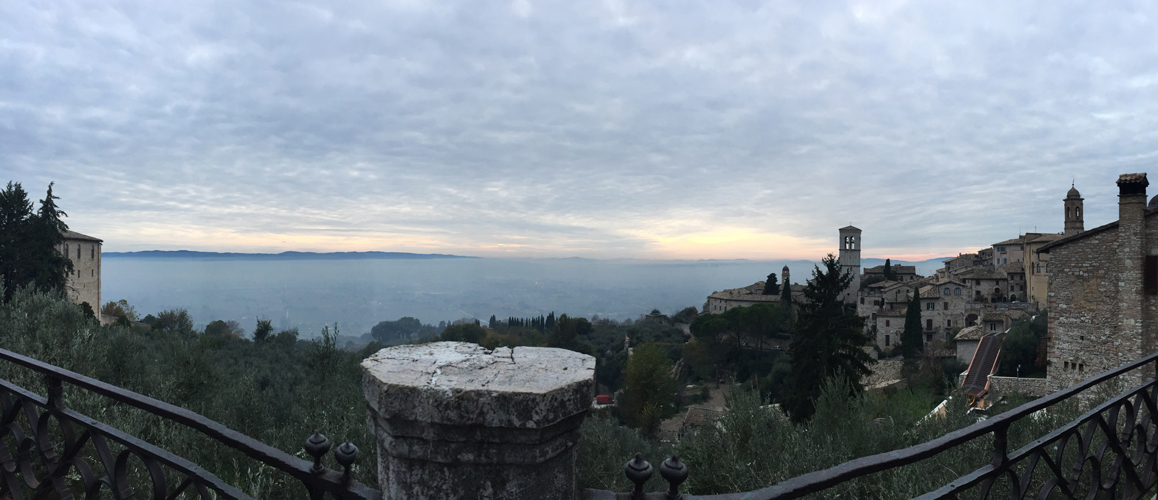 |
Window Shopping
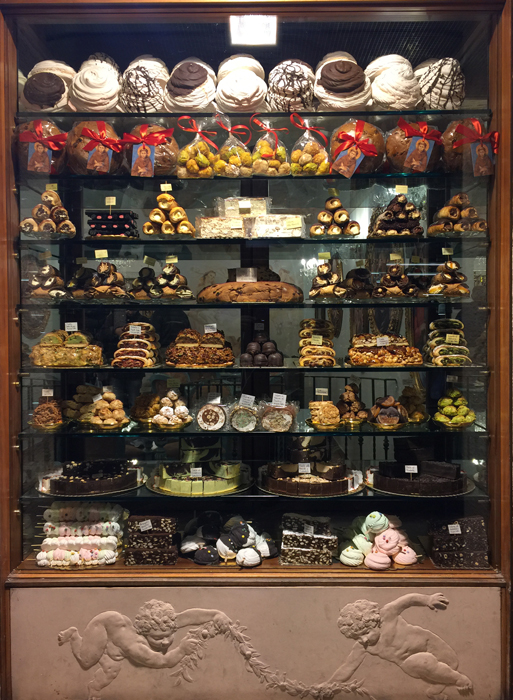 |
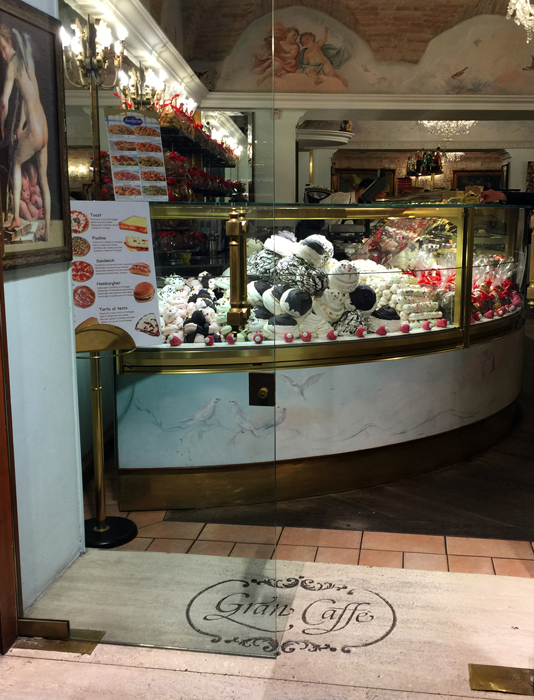 |
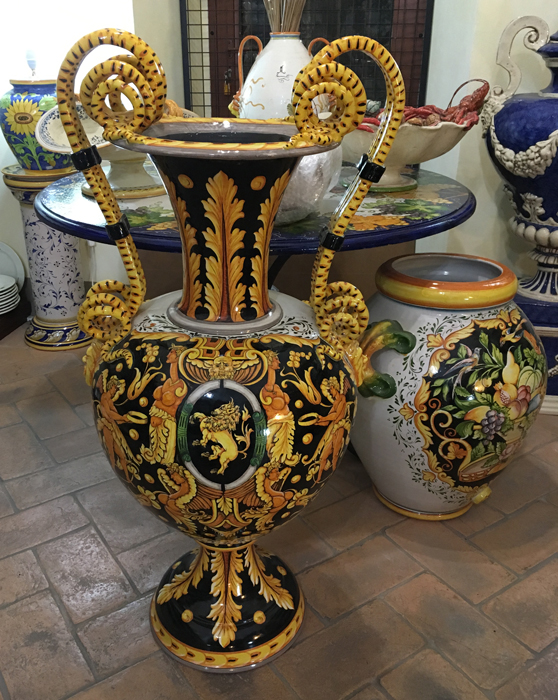 |
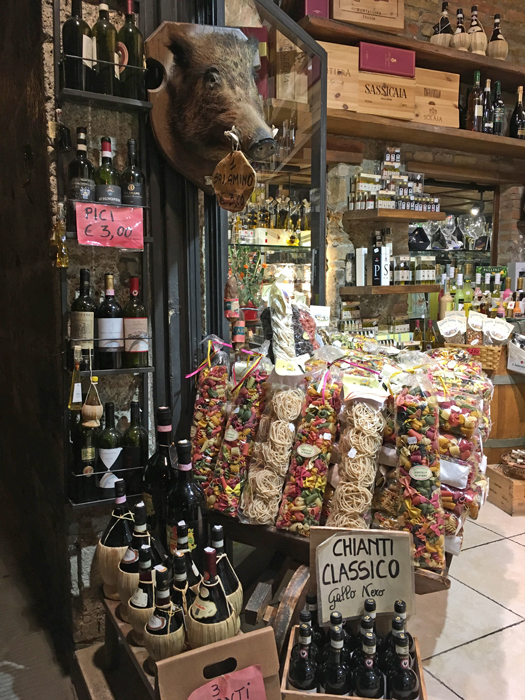 |
| Boar meat is a staple here. |
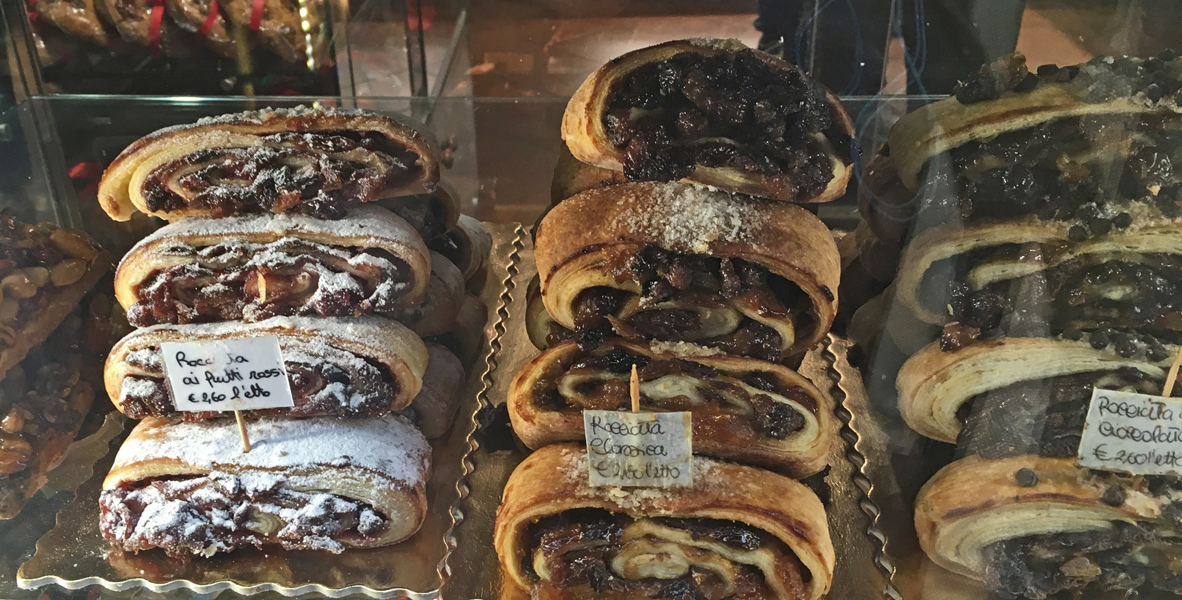 |
| These were so sweet and chewy good! |
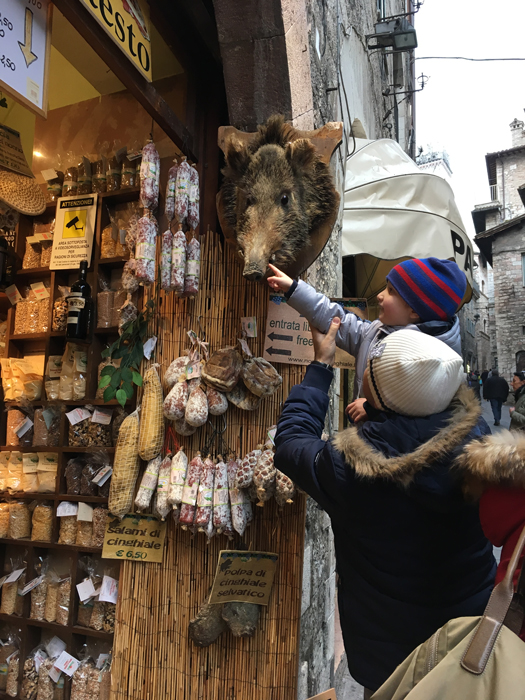 |
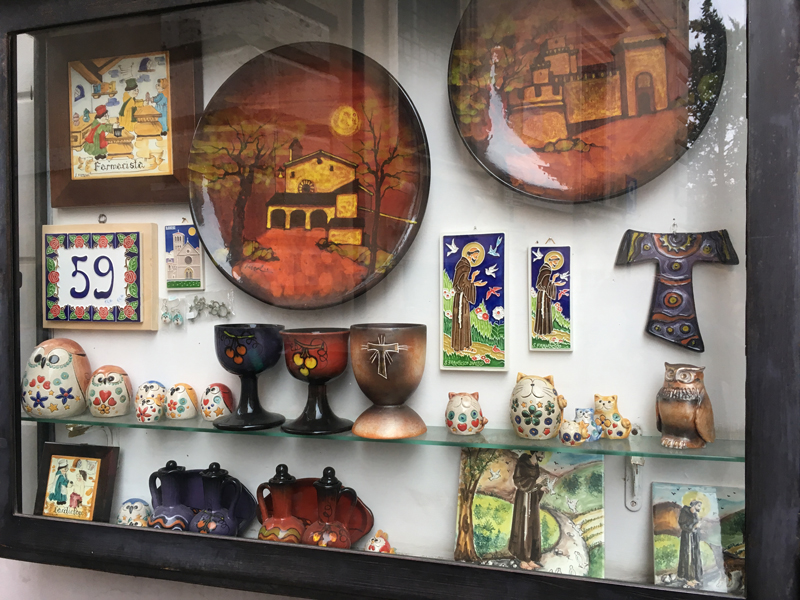 |
| St. Francis memorabilia - the greek letter tau was a symbol used by the Franciscans to represent the cross. |
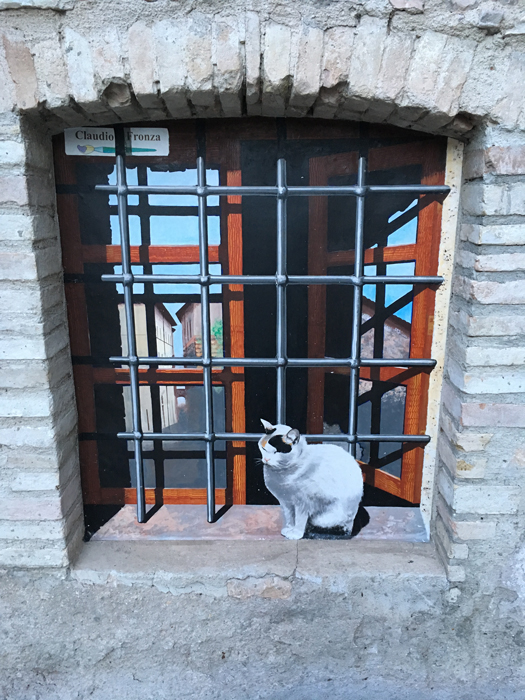 |
Our walking tour extends into the evening, then night;
the city takes on an almost mystical aura.
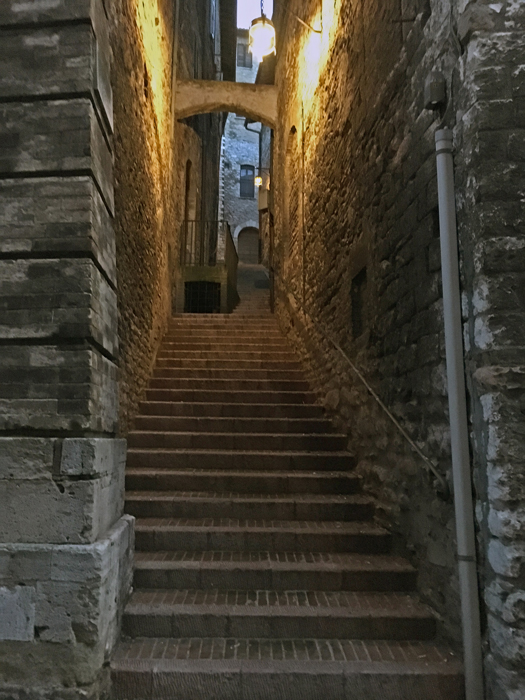 |
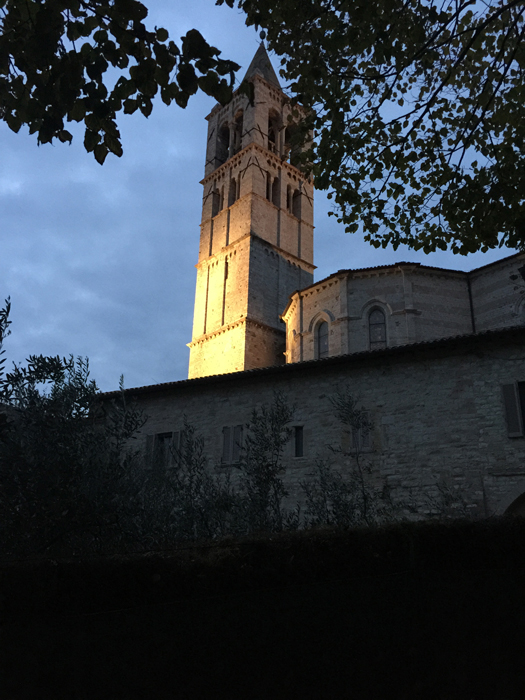 |
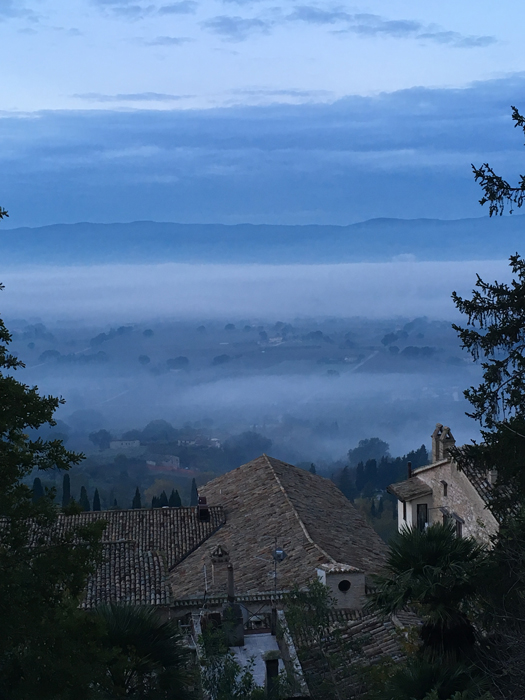 |
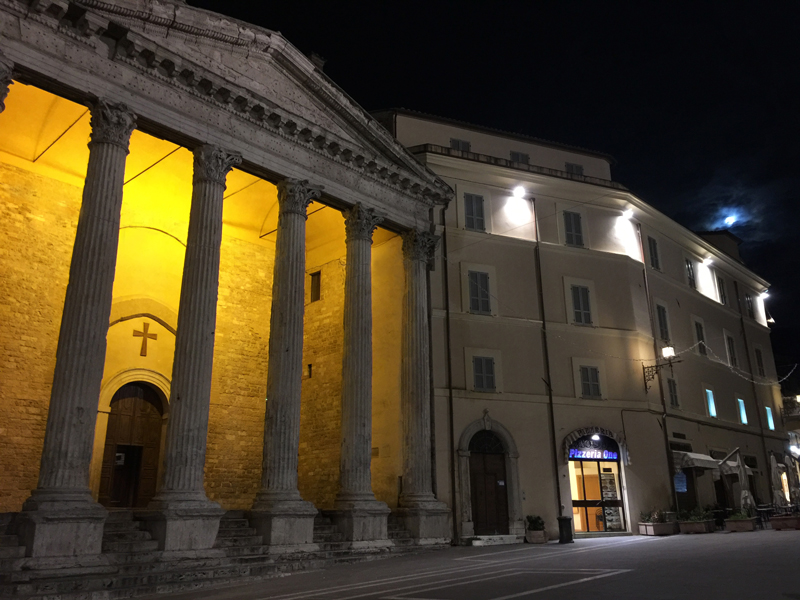 |
 |
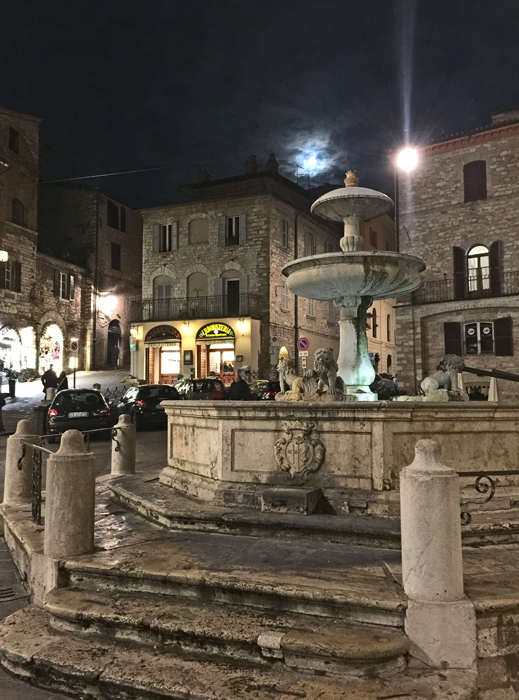 |
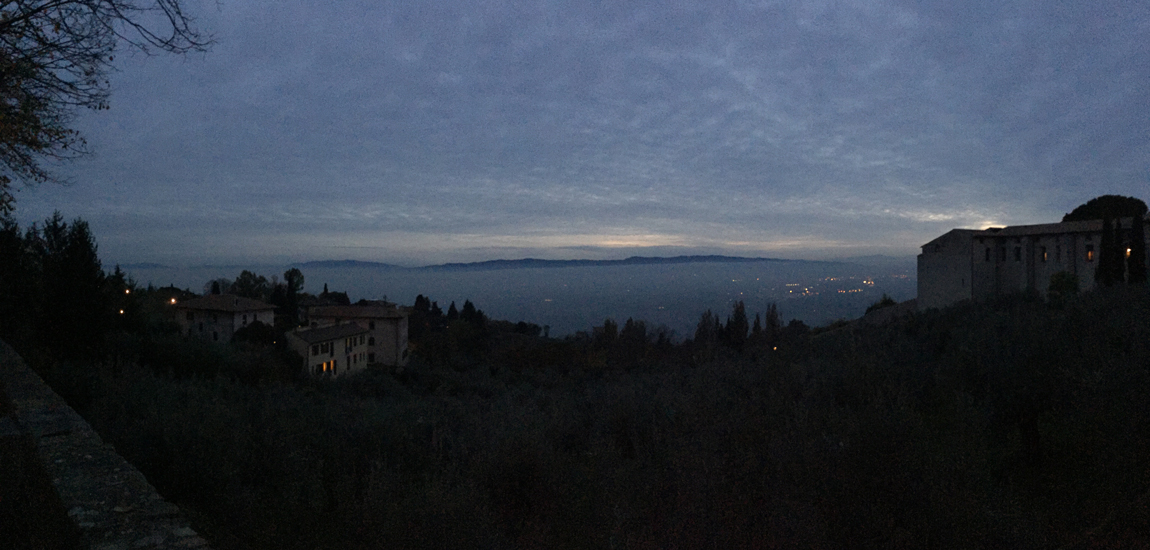 |
Breakfast the next morning before heading to Orvieto.
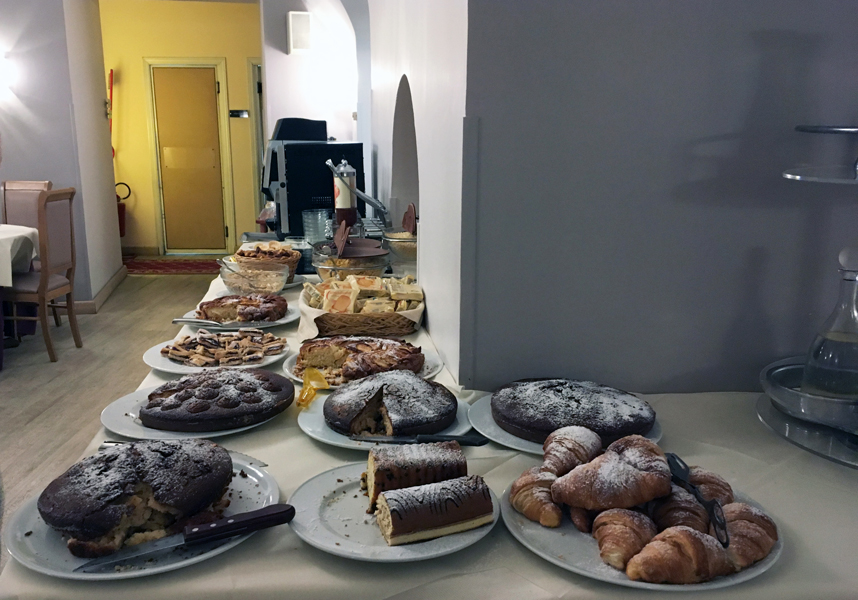 |
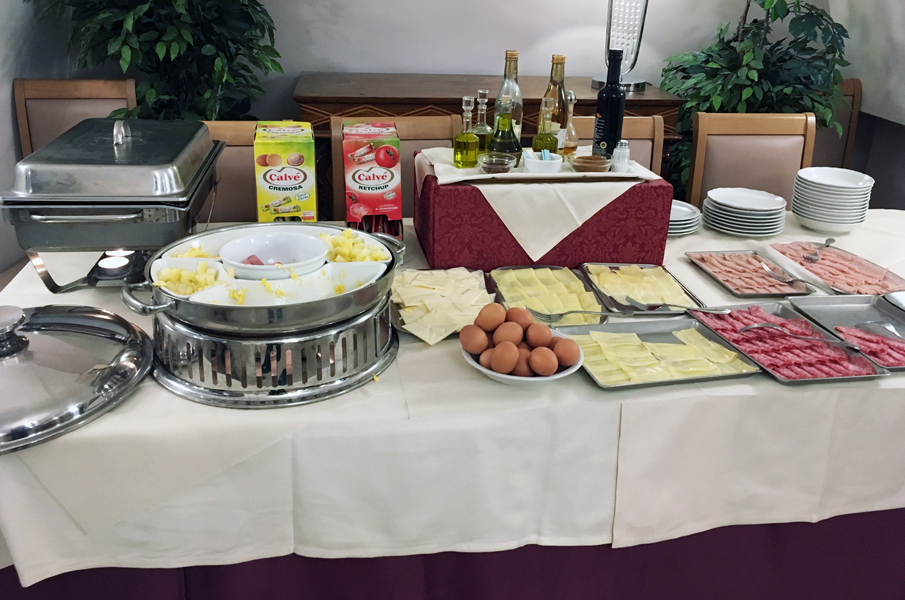 |
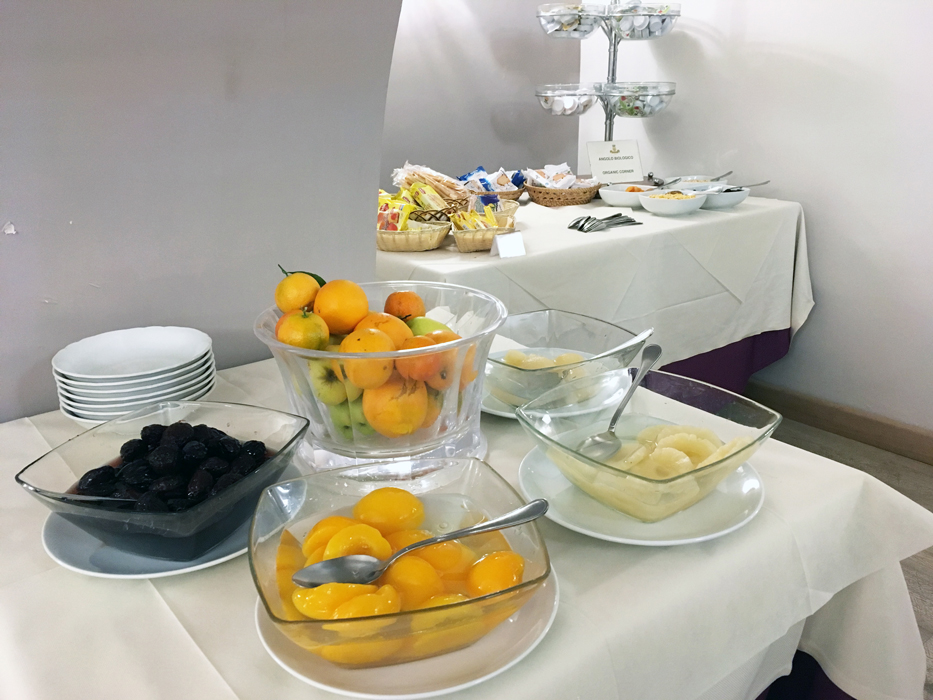 |
Back to Italy 2016 Index